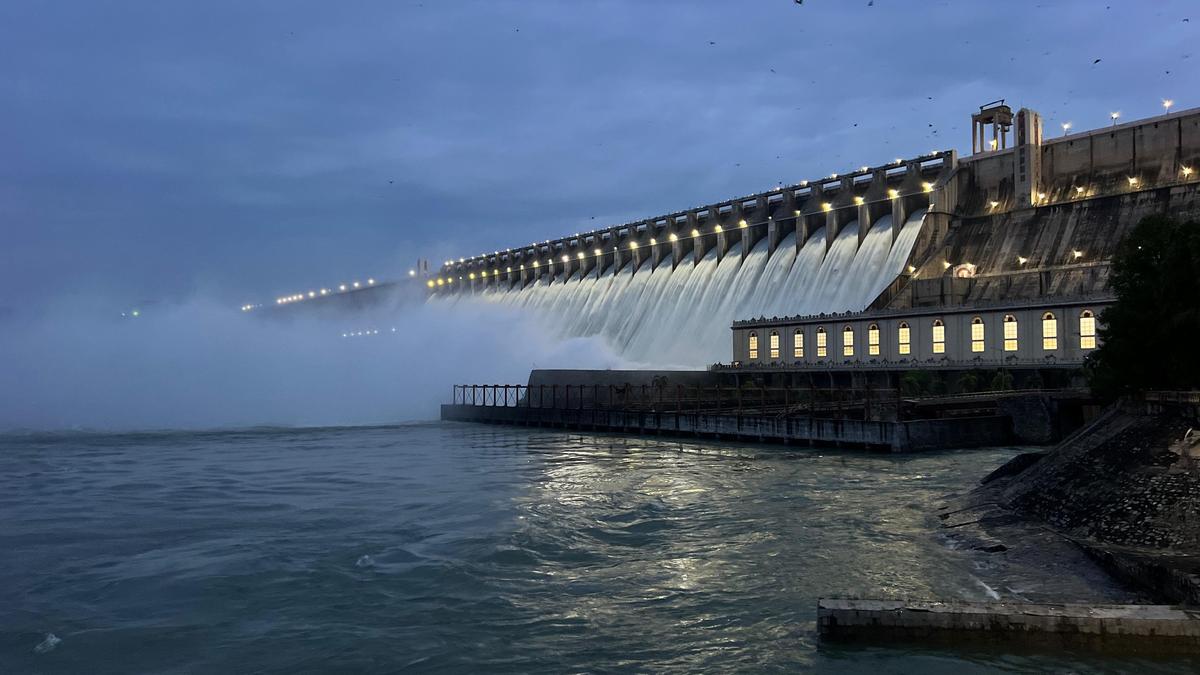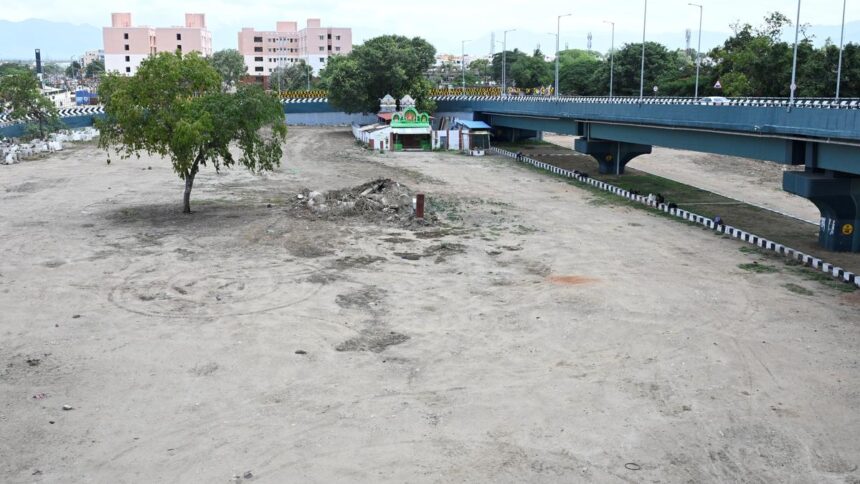
The Nagarjuna Sagar Reservoir is also brimming with water.
| Photo Credit: Special arrangement
Reservoirs across Andhra Pradesh are witnessing heavy inflows following widespread rains in the upper catchment areas, with storage levels nearing full capacity in several key projects. Real-time data from the Water Resources Department shows that both Srisailam and Nagarjuna Sagar reservoirs have crossed the 90% storage mark, prompting authorities to continue flood discharge operations to manage the excess inflows.
At Srisailam Reservoir, the gross storage capacity stands at 215.81 TMC ft. On Monday morning (August 18, 2025), the reservoir recorded a water level of 881.8 ft, with 197.91 TMC ft of water, amounting to 91.71% of its total capacity. The inflow at 11:05 a.m. was measured at 2,30,876 cusecs, while the outflow was slightly higher at 2,31,555 cusecs into the Krishna river. The situation is being closely monitored as continued heavy inflows from upstream catchments keep the reservoir at high levels.
The Nagarjuna Sagar Reservoir is also brimming with water. Against a gross capacity of 312.05 TMC ft, it currently holds 300.03 TMC ft, which is 96.15% of its capacity, at a water level of 585.9 ft. By 9 a.m. today, the reservoir had received inflows of 1,45,797 cusecs but discharged a higher volume of 2,14,095 cusecs to regulate storage.
Further downstream, the Pulichintala Project reported storage levels of 83.92%, holding 38.41 TMC ft against its gross capacity of 45.77 TMC ft. The inflows at 11:05 a.m. were recorded at 1,82,811 cusecs, while the outflow was slightly higher at 1,84,395 cusecs.
In medium and balancing reservoirs, Gorakkalu in Nandyal district is at 71.73% capacity with inflows and outflows balanced at 13,725 cusecs. The Gajuladinne Project in Kurnool has 59.28% storage with moderate inflows of 955 cusecs, while Buggavagu in Palnadu is at 73.12%, receiving 5,400 cusecs inflow against 4,932 cusecs discharge.
The Prakasam Barrage is holding 2.6 TMC ft, which is 84.69% of its gross capacity, with inflows and outflows closely matched at around 2.81 lakh cusecs.
Statewide figures indicate that reservoir levels have improved significantly compared to last year. As of August 18, 2025, major reservoirs with a gross capacity of 908.48 TMC ft are holding 732.15 TMC ft, which is 80.59% of capacity, compared to 659.43 TMC ft or 72.59% on the same day in 2024.
Medium reservoirs, with a combined gross capacity of 91.58 TMC ft, are storing 46.76 TMC ft or 51.06%, an improvement over 34.26 TMC ft or 37.41% last year. Overall, the State’s reservoirs with a total capacity of 1,000.06 TMC ft are holding 778.91 TMC ft, which is 77.89%, compared to 69.36% during the same period last year.
Officials stated that the improved storage levels will strengthen irrigation supply, drinking water availability and power generation in the months ahead. However, they also cautioned people living in low-lying and downstream areas of the Krishna basin to remain alert, as heavy discharges are expected to continue for at least the next 24 hours.
Published – August 18, 2025 12:49 pm IST






















